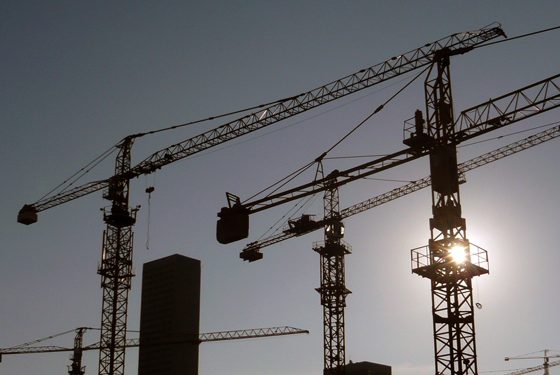Despite facing political and economic pressures due to the spillovers of the ongoing Syrian crisis, the construction and real estate industries in Lebanon remain the most attractive and promising sectors of the country’s resilient economy. The overall volume of real estate sales in Lebanon totaled $8.71 billion in 2013, while the number of property sales transactions reached 69,198 transactions, proving Lebanon’s real estate sector to be peculiarly resilient in the face of all instabilities. All in all, investments in the sector contribute to 21% of the GDP. The overall volume of construction in Lebanon totaled more than $9 billion in 2013. Yet, Lebanon imports around 80% of its construction equipment and building materials
Actually, the construction sector in Lebanon remains one of the most attractive sectors for local, Arab and foreign investors. The future of the construction sector in Lebanon is very promising and Lebanese development companies have gained special expertise from their many projects in Lebanon, the Arab world especially in Iraq, underling Lebanon’s role as a gateway to the wider Arab construction world.
Figures released by the order of Engineers of Beirut & Tripoli show that construction permits issued in the first quarter of 2014 reached 3.4 million square meters, constituting an increase of 18% from the same quarter last year. While cement deliveries in 2013 were higher by 13.5% after having recorded a decline of 10.9% in 2012 pointing to an improving construction activity. This increase is partly attributed to the public sector demand with the ongoing expansion project of the Port of Beirut and the ongoing mega projects in Beirut and the coastal areas. Actually, 382 housing projects are under construction in Municipal Beirut area in 96 different locations divided into different price categories.
Construction loans went up by 14.7% year-on-year to almost $10 billion by end of 2013. This increase was mainly the direct result of Banque du Liban (BDL) and the financial sector’s stimuli to boost demand. This stimulus package provided was very encouraging and has led to increase in demand for housing loans especially for small sized apartments. Actually, demand is driven by more affordable, smaller sized houses mainly in the neighborhoods of Beirut. And this trend seems to sustain as construction activity in the smaller-sized and more affordable segment is growing more rapidly than in the larger-sized home segment.
Construction works on the largest real estate development in Lebanon, the $2 billion Waterfront City on the seafront of Dbayyeh, are going as scheduled. Plus Holding’s two major towers in the Beirut Central District are on schedule and delivery is expected next year. DAMAC Properties has also announced that its $300 million Versace DAMAC Tower in the Beirut Central District is going ahead as scheduled.
The $500 million Sama Beirut, which is the highest tower planned in Lebanon, will start delivering by mid of 2015. While local developer Sayfco announced a $200 million development in the Kesrouan village of Bqaatouta.
Lebanon a gateway to the Levant countries
Despite regional political uncertainties, Lebanon’s investment climate remains promising especially in the trade, real estate and construction sectors. Lebanon’s role as the gateway to the Levant countries of Syria and Jordan has been further emphasized due to the regional unrests.
The region’s potential developments and reconstruction could open doors to many profitable opportunities in the construction, infrastructure and real estate industries in Lebanon and the neighboring Levant countries.
The new plan to modernize and expand the Beirut Port came also as a result of the Syrian war that has made overland transportation of goods nearly impossible, with the Beirut Port emerging as an alternative trans-shipment hub in the Eastern Mediterranean. The renovation works, aims at increasing the working hours of the port to speed up the clearance of the containers.
In July 2013, UN experts estimated more than $80 billion will be invested in the reconstruction in Syria and according to forecasts from the UN’s Economic and Social Commission for Western Asia (ESCWA), when reconstruction begins, demand for cement in Syria will rise to around 30 million tons per year, benefiting the Lebanese building materials industry.
The construction sector in Jordan is heading towards revival with the announcement of several major projects across the country and with the government stating that in 2013 the sector performed better than the previous years.
Another key promising area is related to the potential oil and gas activities off the Lebanese shore. According to experts, setting the infrastructure and the environment and safety frameworks will require 30 different services. The country and region’s construction sector will benefit from the opportunities that will arise from the potentials of this prospective national wealth.
ifpinfo
1 June






















































